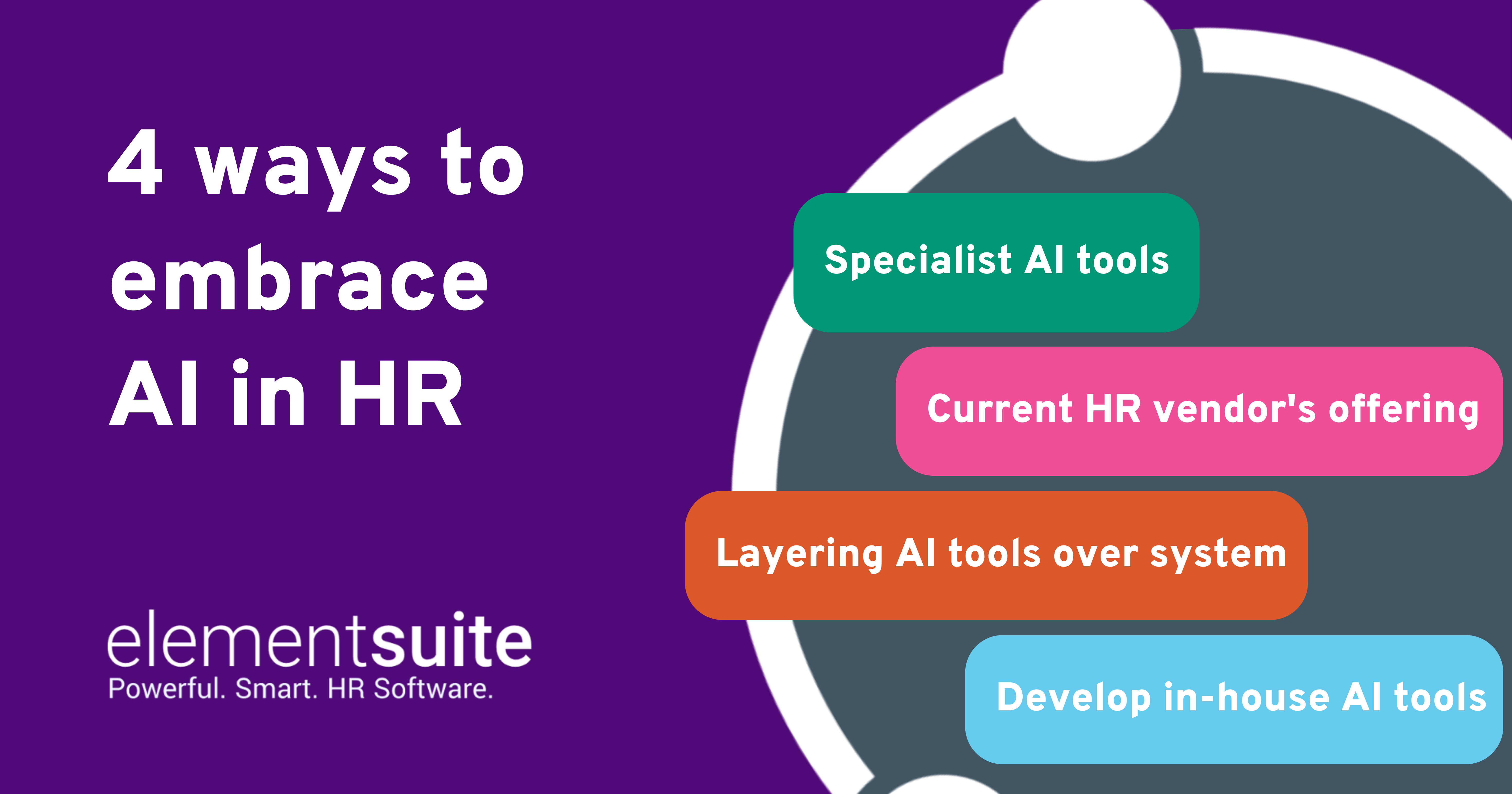It’s hard to imagine a world without technology. We rely on it for so many things, from communicating with loved ones, to getting our work done. And as HR technology becomes more sophisticated and widespread, its value to businesses is increasing. In fact, in 2021, the global HR technology market was worth $28.65 billion, and it is predicted to increase to $48.5 billion by 2027. This is because businesses are realising the benefits of using technology to help manage their HR processes.
But what does this mean for HR professionals? Are we slowly being replaced by technology? Will HR be run by robots in 20 years’ time?
The answer is NO, absolutely not.
Yes, HR technologies are improving many traditional HR processes, making them more efficient and easier to manage (for which we are all very much thankful). But, let’s get one thing straight: the human HR professional will still continue to exist in 20, 30, and even 40 years’ time. The role will just be different, that’s all.
The HR robots that we fear can have those boring, repetitive tasks. At the end of the day, if we are all being completely honest, we loath the thought of all the cumbersome administration, anyway. But what HR technology can’t replace, is the human touch of being an HR professional.
No matter how advanced a robot can be, it will never be human. And when I say human, I mean that it won’t have that ‘sixth sense’ that guides important business decision-making; the compassion to support those involved in a disciplinary; and of course, the warmth to build those relationships that shape the employee experience and overall company culture.
So no, HR technology won’t be replacing us anytime soon. But, there is definitely a place for it to help us be better at what we do. Let’s take a look into this in more detail:
Improves Diversity and Inclusion
Unconscious bias is a type of discrimination that we are all susceptible to – but is often difficult to recognise and overcome. It occurs when we make judgements about people based on their appearance or perceived characteristics, rather than their actual ability or merits. This can lead to unfair decisions being made, such as not hiring someone because they don’t fit a certain stereotype, or promoting someone based on their gender or ethnicity rather than their skills and abilities.
But unconscious bias can be eliminated with the help of HR technology. For example, many HR software platforms now have features that allow recruiters to blind themselves to a candidate’s name and photo, so they can focus purely on their experience and qualifications. This helps to ensure that candidates are being judged fairly and objectively, without any unconscious bias influencing the decision-making process.
The same principle can be applied to performance reviews. HR technology can be used to collect and store data on employee performance. So when it comes to reviewing time, managers can base their decisions on hard facts and figures, rather than their personal opinions.
The use of data collected through HR platforms can also help to identify any unconscious bias in the recruitment and performance review process. By looking at metrics such as the number of women or minority employees that are being hired, or the number of employees who receive high or low marks in a performance review, organisations can start to see if any unfair decisions are being made.
Once these biases have been identified, organisations can put initiatives in place to reduce them. For example, providing training on unconscious bias for people leaders and managers, or create guidelines for how performance reviews should be conducted.
Automates and Streamlines HR Processes
Most HR processes are time-consuming and tedious. But thankfully, they can be automated and streamlined with the help of a HR software.
For example, when it comes to onboarding new employees, HR software can be used to create a customised onboarding programme that automatically surfaces the required documents and instructions to new employees, in order to get them started. This not only saves time for both the employee and the HR department, but it also ensures that all the necessary information is completed on time.
Many HR software platforms also have features that empower employees to manage their own profiles, such as updating their own contact details, book in annual leave, and view their payslips online without having to go through a human intermediary. This also saves a lot of time for HR professionals, who would otherwise be bogged down with these types of requests.
Let’s not forget about the enhanced accuracy and consistency of streamlining HR processes, such as data-entry. Data entry is often a time-consuming task, but it is also one that is prone to human error. Automated systems remove the possibility of human error, meaning that the system collates all the information correctly the first time, every time.
Helps Make Faster and More Data-Driven Decisions
Let’s face it, data management can be a real headache for HR professionals. Especially for those who aren’t yet data savvy. But with the right HR technology, it can collate, organise, analyse and interpret results to help you make more evidence-based business decisions.
For example, if you’re looking to improve employee retention rates, a HR software can help you to identify which employees are most at risk of leaving the organisation by analysing data such as length of service, job satisfaction levels, career progression opportunities and even location. This information can then be used to create targeted retention strategies that are more likely to be successful in keeping these employees with the company.
But, making decisions based on data doesn’t just apply to improving employee retention rates. It can be used for any area of HR, from talent acquisition and succession planning, to learning and development and employee benefits.
HR technology can also help organisations to predict future talent needs and trends, through predictive analysis. By looking at historical data on things such as employee turnover rates, job postings and organisational growth, the right HR software can predict how many employees will be needed in the future. This can then be used to put strategies in place for recruiting these employees, such as increasing recruitment budgets or expanding the reach of your job advertisements.
Predictive analytics can also be used to identify any potential skill gaps within the organisation. For example, if you find that there will be a high demand for employees with specific skills, but not enough people with those skills currently working for the company, you can then look to put initiatives in place to help to close that gap.
Ultimately, HR technology can provide an invaluable glimpse into the future, allowing you to plan and prepare for potential changes well in advance.
Helps Create Happier Employees
According to research conducted by the University of Oxford’s Business School, happier employees are 13% more productive. So it stands to reason that anything that can be done to increase employee happiness should be a priority for HR professionals.
Going back to basics with Maslows Hierarchy of Needs, simply paying employees on time goes a long way to making them feel safe and secure in their roles. But, when processing payroll manually, human errors can unfortunately happen, which lead to potential delays in payments or underpayments/overpayments. This not only creates an unhappy workforce, but can also lead to legal action being taken against the organisation. Automating your payroll process using an HR software removes the possibility of human error and ensures that employees are paid on time, every time.
But its not just about the basics, as there is more to employee happiness than getting paid on time. It also comes from feeling engaged with their work. And that’s where HR technology can be your right-hand man.
Many HR systems now have employee feedback tools that constantly monitor employee engagement levels and identify any potential problems early on. This data can then be used to create targeted interventions that aim to improve engagement levels and, in turn, employee satisfaction.
Don’t Fear the Technology – Embrace it!
HR technology is here to stay, and its only going to become more and more commonplace in organisations as time goes on. But there’s no need to be afraid of it. Instead, embrace it and use it to your advantage. It has the potential to completely transform the HR function, making processes more efficient, easier to manage and giving you more time to focus on the things that really matter – building organisational strength.
So, what are you waiting for? It’s time to get on board the HR tech revolution!
Contact us to learn more about HR technology and how it can benefit your organisation.




